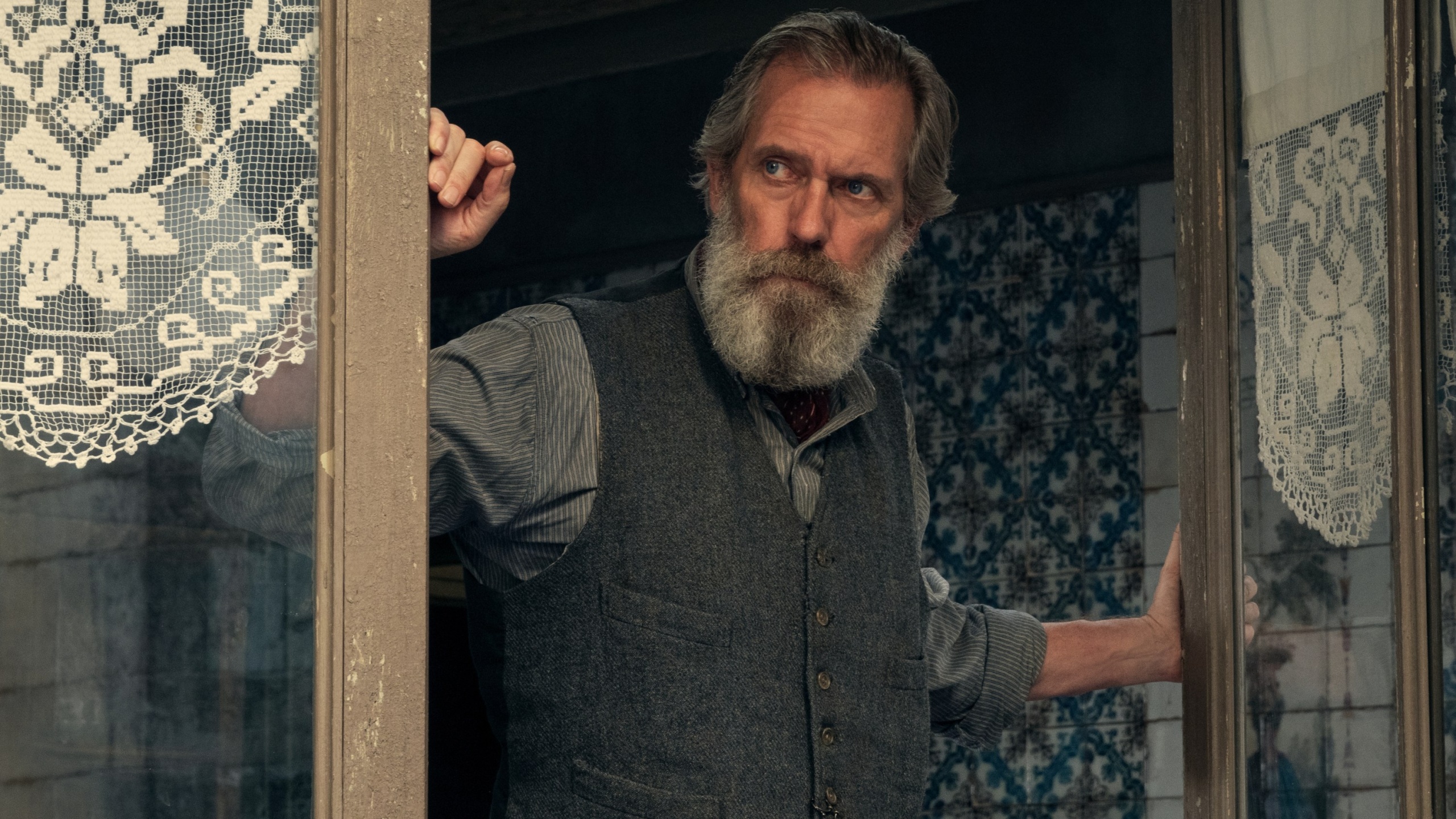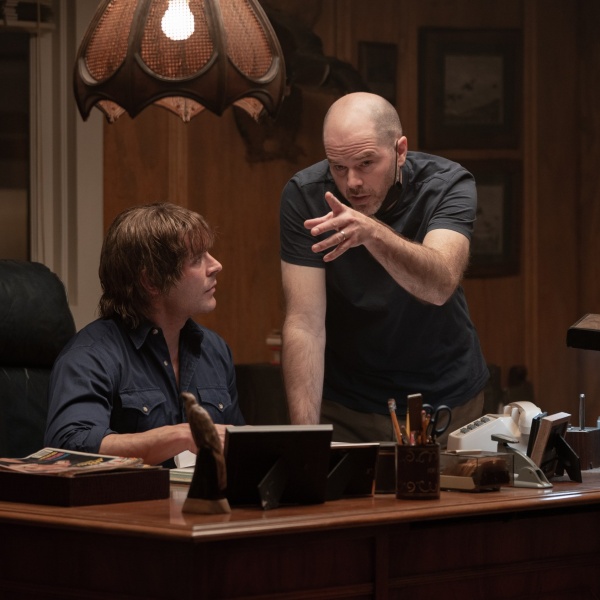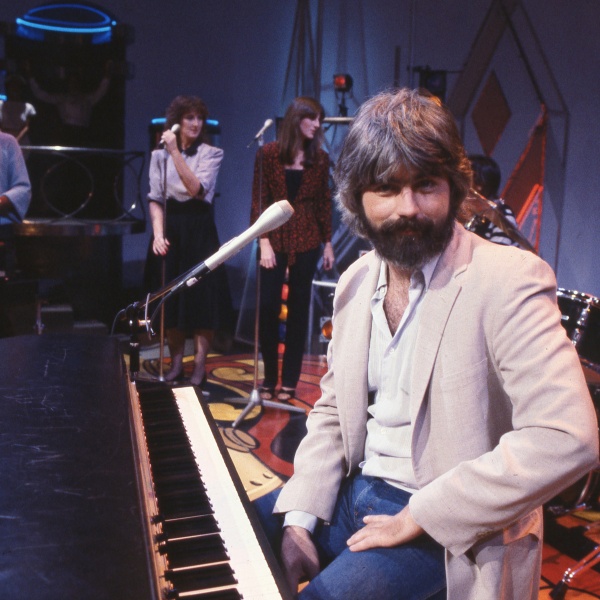World War II is a subject that filmmakers return to every year. In 2023 alone, we saw the U.S. home front tackled at a universal scale in “Oppenheimer,” the sweep of European resistance in “All The Light We Cannot See,” “A Small Light,” and “Transatlantic,” indulged in the action-packed catharsis of a Nazi murder-spree in “Sisu,” and heard, if not seen, the horror of the death camps in “The Zone of Interest.”
More recent series recreate the era, too, including Tom Hanks’ and Steven Spielberg’s third piece in their TV miniseries triumvirate about the American war effort, “Masters of the Air,” as well as Baz Lurhman’s, Hugh Jackman’s, and Nicole Kidman’s return to sweeping WWII melodrama in “Faraway Downs.” This is to say nothing of multi-season series, like the recently completed “Rogue Heroes” or the upcoming final season of “A League of Their Own,” that spend more than one campaign’s worth of time in the ’40s.
That’s a lot of sustained cinematic interest in World War II, which made IndieWiree curious: Where do all the Nazi uniforms and cute resistance berets live when we’re not dramatizing the Blitzkrieg across Europe? How much customization do different projects need to do and what’s possible at different budget levels? Is vintage shopping for civilian costume options still viable, which might suggest that Hollywood’s fascination with the ’40s is a direct reflection of the era’s cultural staying power in our own modern aesthetic sensibilities?
So, we reached out to some costume designers about their experience designing in the era. Almost everyone we spoke to has worked on multiple shows and movies set during World War II. “All The Light We Cannot See” costume designer Andrea Flesch wins the specialist citation for having completed six films, two short films, and two television shows that all take place in the shadow of the war. But even Ellen Mirojick, whose work on “Oppenheimer” is her first foray into this particular period, noted that the interest is so rabid it requires designers to really get creative with sourcing costumes — that there aren’t enough rentals available in all the U.S. costume houses combined when multiple films and TV series are shooting. Anna Vilppunen, costume designer of “Sisu,” confirmed that costume designers themselves constantly have to grapple with where WWII costumes come from.
-
The Search for WWII-Ready Costumes

Image Credit: Apple TV+ The great Colleen Atwood, whose fourth entry into the period is “Masters of the Air,” pointed out that the scale of the war can be a challenge. She needed to supply a whole corps’ worth of airmen, soldiers from four different nations (the U.S., the U.K., Germany, and Russia), civilians, and an entire camp full of prisoners of war. “The biggest challenge was creating the number of costumes we needed for the show,” Atwood told IndieWire.
Though there are plenty of costume houses that have rentable options for WWII-era costumes, a designer will end up looking for or creating pieces that really speak to the specific story they’re telling. Andrea Flesch estimated that she only used costume houses for about 10 percent of the pieces on “All The Light We Cannot See” and pulled pieces from Angels Costume, Cosprop in London, Perris Costume in Madrid, and Euro Costumes in Paris. Stateside, Colleen Atwood had success pulling from Hero Costume, CRC, and both Eastern and Western Costume for uniforms.
-
A Different Era for People of All Sizes

Image Credit: ATSUSHI NISHIJIMA/NETFLIX But even where there is a plentiful stock of rentable costumes, there’s a sneaky challenge that can render them less useful than they might be. “I would have to say that human bodies in the ’40s were very different than contemporary human bodies,” Trayce Gigi Field, costume designer of “A League of Their Own,” said. “So the clothes and shoes fit differently. It was rare to have a size 14 shoe for men. People are just built differently nowadays.” Atwood added that the challenge is comprehensive. “You have to worry about all of it, from underwear to shoes, to civilians to uniforms,” Atwood said.
-
The Home Run Option

Image Credit: Courtesy of Trayce Gigi Field There is one reliable staple that multiple costume designers said was pretty easy to find, and it makes sense as some of the most distinctive and durable to survive the era: hats and jewelry. As Justine Seymour, costume designer of “Transatlantic,” pointed out, “The many hats worn in this time period are still going strong today.”
But even with a lot of hat options, Trayce Gigi Field had to create hats and baseball uniforms for the teams in “A League of Their Own” that could survive the rigors of shooting. That’s enough hard work on its own, but Field really worried about preserving the pieces she was able to find. “Many of the pieces we used for the show have been around for almost 90 years and we have to take serious care of them. The fabric can be frail and can be easily damaged. Every piece is precious,” Field said.
-
Preserving the Era

Image Credit: Courtesy of Justine Seymour Preservation is a huge, unifying challenge for all film and TV projects set in the WWII era. “In Finland we have this saying, ‘It’s not a renewable natural resource’ and I feel everybody should understand that the real piece might be the last of its kind,” Vilppunen said. “So if something authentic and unique gets destroyed while shooting a film, we are not able to get it back. That is why we should have a budget to manufacture replicas and destroy those, if needed.”
Seymour agreed that “keeping the beautiful historical costumes safe while being true to the narrative” is the fine balancing act that costume designers working on WWII projects have to achieve.
-
The Home Front and Away

Image Credit: Melinda Sue Gordon But sometimes they can be sidestepped. Mirojnick outlined that the challenges of working with actual fabrics from the period are pretty steep and can be prohibitive depending on the scale of the project. “There are costumes that are moth-ridden and have been fit so many times for many films they are unusable. If you mend, weave, or do whatever repair is necessary, chances are the garment might still fall apart. The original garments are decades old. It’s constant wear and tear,” Mirojnick said. It’s a key reason, in addition to the sheer scale of clothing all the workers and scientists who J. Robert Oppenheimer drew to Los Alamos, that she did more than half of her costuming by building clothes from scratch.
The problem of preserving historic clothes may be constant, but the vintage options vary by region. Seymour found a lot of vintage pieces for “Transatlantic” by shopping in Paris, where “all were really good stock.” She only ended up creating about 20 percent of the costumes.
Vilppunen confirmed that while costume houses are always just one part of the process, there are options all over Europe. “[On ‘Sisu’] I used Hero Collection in Poland and Finland-based Yle and TV2. I also ordered replicas from all around Europe. In earlier projects, I have used costume rentals like Theaterkunst in Berlin and Peris Costumes in Madrid. They have the knowledge and great amounts of different war uniforms,” Vilppunen said.
-
There’s Always an Edge Case

Image Credit: Antti Rastivo Vilppunen’s experience in Finland couldn’t have been more different, though. “We have quite limited sources here in Finland when speaking of authentic costumes from that time period,” Vilppunen said. “There’s a lot more authentic clothing saved in good condition in Sweden, so I oftentimes visit their costume rentals — Independent Kostym, Göteborgs Kostymforråd, for example — and vintage stores.”
Of course, Sweden was never a front during the war and Finland was, so it’s understandable that fewer uniforms have survived. But uniforms are a particular challenge for WWII combat films because they often need to be degraded over the course of an action scene. “From the very start, it was clear that I needed to manufacture all of the main character Aatami Korpi’s [Jorma Tommila] costumes as we needed so many repeats of the clothes,” Vilppunen said. “Many of the war uniforms were meant to be destroyed in the story and this meant that we could’t rent those. Instead, I ordered replicas from Germany and Spain.”
-
The War Is Both Past and Present

Image Credit: Courtesy of Ellen Mirojnick Wherever the costumes come from, beyond the logistical challenges of keeping them up through the shoot, there’s the challenge of telling the particular story. “From a personal standpoint, I believe the most difficult challenge is accuracy,” Field said. “I strive for every piece to be historically accurate, but there are always people throughout history that have their own sense of style, and I want to incorporate that realness as well. Keeping the looks genuine is so important!”
It’s a difficult balance to strike between personal style and period accuracy and relationships between characters the costumes need to suggest. Even with a wide variety of approaches and options for costumes, every project has to take a different approach. There’s maybe only one thing that unites all the different WWII-era films and series: “Worry is part of the period,” Mirojnick said.





